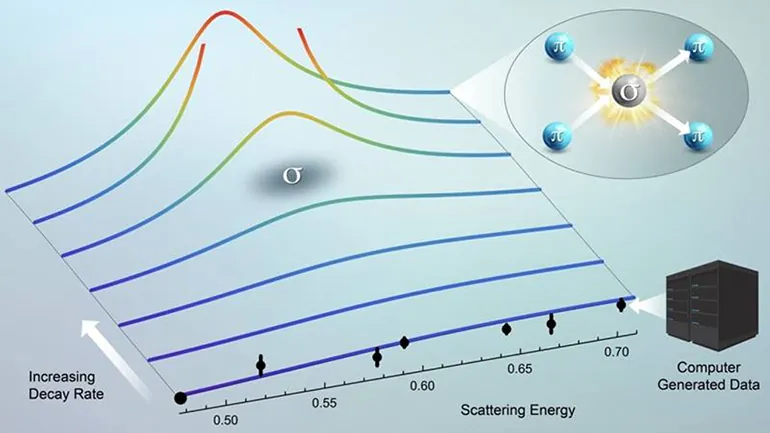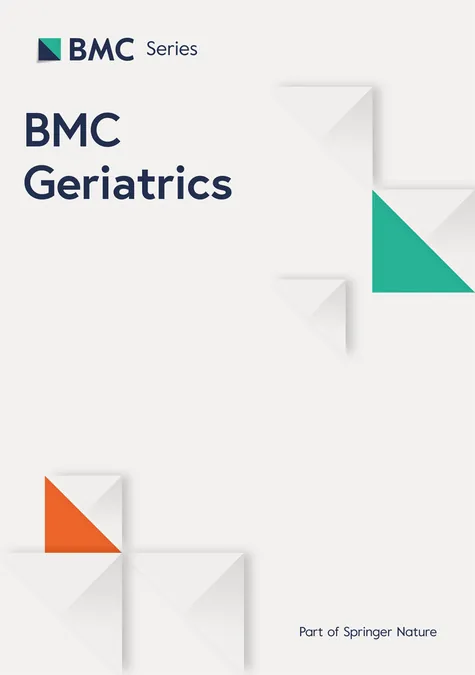
Breakthrough in Nuclear Physics: Supercomputers Unveil Secrets of the Sigma Meson!
2025-04-29
Author: Noah
Revolutionizing Our Understanding of Subatomic Particles
In a groundbreaking achievement, a collaborative effort backed by the U.S. Department of Energy has successfully calculated the mass and lifetime of the elusive sigma meson with unparalleled precision. This achievement, published in the journal *Physical Review D*, has been a long-sought goal of nuclear theorists for decades. The sigma meson, an unstable particle composed of one quark and one antiquark, plays a crucial role in mediating the forces that bind protons and neutrons within atomic nuclei.
Why the Sigma Meson Matters
The sigma meson, scientifically known as f0(500), is the lightest unstable hadron, decaying in mere 10^-24 seconds into two pions. Understanding its properties not only sharpens the connection between quantum chromodynamics (QCD)—the theory describing strong interactions at the quark level—and the complex nuclear structures we observe in nature but also enhances our knowledge of fundamental nuclear processes, from star isotope creation to laboratory isotope separation.
Overcoming Historical Challenges
For years, standard lattice-QCD methods faced significant challenges in accurately representing such transient particles. Their short-lived nature often rendered them nearly invisible on computational grids, complicating the extraction of vital properties like scattering relations. This left theorists relying on imprecise model fittings, obscuring the true character of the sigma meson.
Enter the ExoHad Collaboration
The breakthrough came from the Exotic Hadron Topical Collaboration, known as ExoHad. By integrating traditional lattice calculations with innovative dispersion relations, they successfully enforced essential principles such as crossing symmetry. This cutting-edge approach allowed them to derive clearer insights into the sigma meson, significantly improving the extraction of its true mass and decay characteristics.
Harnessing Supercomputing Power
This ambitious project required immense computational resources. The ExoHad team utilized powerful capacities from four premier high-performance computing facilities, including Lawrence Berkeley National Laboratory and the Texas Advanced Computing Center. With the support of various government programs, they were able to achieve percent-level accuracy in their results.
Unprecedented Results with Practical Implications
The findings from ExoHad mark a significant milestone, offering what has been termed "unprecedented accuracy" regarding the sigma meson’s pole mass and decay rate. These results not only contribute to global models of nucleon scattering but are also pivotal for ongoing experiments at facilities like Jefferson Lab, enhancing our understanding of the two-pion continuum.
Future Challenges and Opportunities
Despite the victory with the sigma meson, the journey does not end here. Researchers aim to extend their methods to decipher even more exotic resonances and challenging decay processes in the complex world of nuclear forces. This endeavor will likely necessitate even larger ensemble computations, especially as powerful exascale machines come online.
The Path Forward in Quantum Physics
The U.S. Department of Energy views this achievement as a testament to the capabilities of first-principles QCD in addressing the complexities of nuclear interactions. As advancements continue, this framework could unlock further mysteries surrounding other transient particles in the nucleus, such as tetraquarks and components of neutron stars. Thanks to advanced dispersion relations and the might of supercomputers, the sigma meson has emerged from the shadows into a clearer theoretical landscape, paving the way for future discoveries in the subatomic realm.









 Brasil (PT)
Brasil (PT)
 Canada (EN)
Canada (EN)
 Chile (ES)
Chile (ES)
 Česko (CS)
Česko (CS)
 대한민국 (KO)
대한민국 (KO)
 España (ES)
España (ES)
 France (FR)
France (FR)
 Hong Kong (EN)
Hong Kong (EN)
 Italia (IT)
Italia (IT)
 日本 (JA)
日本 (JA)
 Magyarország (HU)
Magyarország (HU)
 Norge (NO)
Norge (NO)
 Polska (PL)
Polska (PL)
 Schweiz (DE)
Schweiz (DE)
 Singapore (EN)
Singapore (EN)
 Sverige (SV)
Sverige (SV)
 Suomi (FI)
Suomi (FI)
 Türkiye (TR)
Türkiye (TR)
 الإمارات العربية المتحدة (AR)
الإمارات العربية المتحدة (AR)